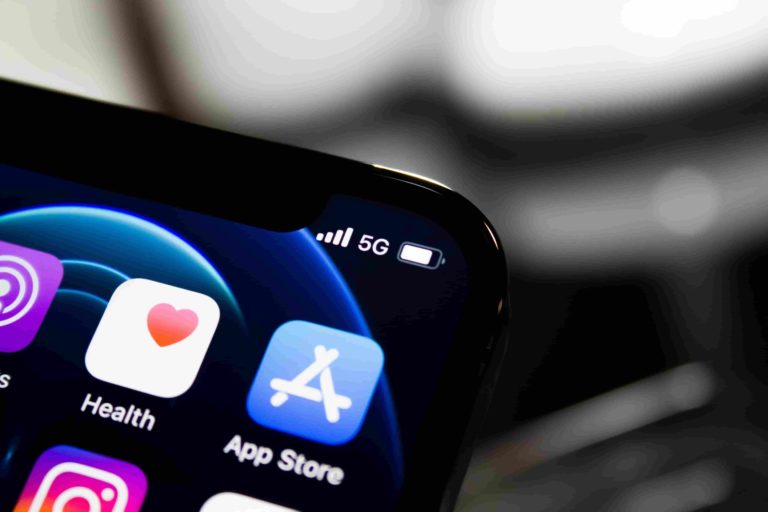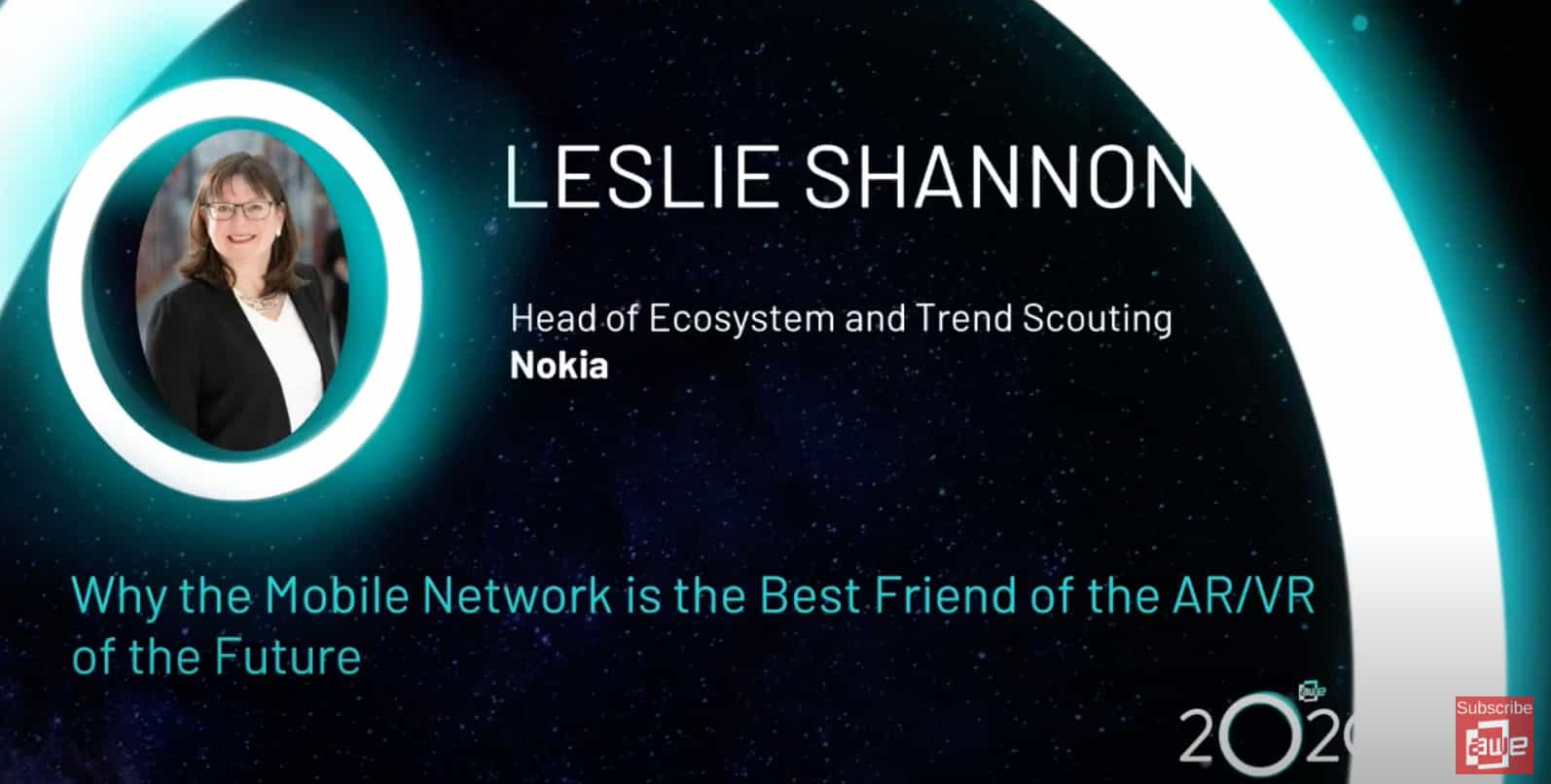
Before “Metaverse” was recently elevated as the latest overused XR buzzword, 5G was the reigning champ. To be clear, both of these technologies — and other industry jargon — represent real opportunities and accelerants… they’re just a bit overused (and misused) at times.
5G, for example, is often generalized as a technology that will unlock spatial experiences due to faster speeds and low latency. That’s certainly the case, but it misses other factors such as edge compute and high-frequency signals that enable precision in geo-located AR.
Given sometimes-generalized depictions, rare cases of concrete discussion around 5G and its tangible application are valuable. And this is precisely what was delivered by Nokia’s head of ecosystem & trend scouting Leslie Shannon at AWE — the subject of this week’s XR talks.

Different Flavors
So what’s the biggest misconception about 5G? First, there are several different flavors of 5G, which map to different bands of the wireless spectrum that they occupy. These 5G variants also map to different use cases, depending on their connectivity and compute needs.
For the latter, a technology that’s a corollary to 5G will play a big part: edge networks. This includes low-range networks whose endpoints are much closer to the node than currently seen in 4G cellular networks. With that proximity, they fulfill much more than connectivity.
Specifically, the network edge can offer compute processing. The advantage there is to offload that costly burden from the device itself. Once that’s accomplished, devices can shed weight, heat, and other factors that are vexing challenges for device design and engineering.
For this reason, Shannon asserts that telcos will have a key part in the spatial future. This carries forward their legacy in being enabling entities in past tech revolutions — everything from the transistor’s invention at Bell Labs to providing the core infrastructure for the internet itself.
“[Edge compute] would have to be actually quite close to you in the network,” she said. “The big web-scale players like Google or Amazon [don’t] have data centers every 300 kilometers. But the phone companies do have that distributed network.”

XR’s Best Friend
Applying all of the above to AR, 5G will phase in at roughly the same pace as the progression of spatial computing over the coming years. Mobile AR today mostly utilizes 4G, while headworn AR — and geo-spatial AR cloud rendering — will require 5G (see graphic above).
Meanwhile, besides telecom networks, a few factors outside of AR could influence and accelerate 5G rollouts. Specifically, Shannon points to cloud gaming. In order for platforms like Google Stadia to work, they require all of the speed, low latency, and other benefits that 5G offers.
So why will gaming push 5G in ways that AR itself can’t? As sportswriter Tony Kornheiser likes to say, “the answer to all your questions is money.” Gaming is a $152 billion industry (1.6x the film industry). With that much money on the line, enabling technologies can be compelled.
So in that way, cloud gaming can be seen as AR’s best friend, says Shannon, as it will accelerate the necessary investments and deployment in 5G. This is analogous to the advancements in computer vision that are being driven by the deep-pocketed and highly-motivated auto industry.
Shannon leaves us with a well-worn but pertinent Bill Gates quote: we often overestimate the next two years but underestimate the next 10 (paraphrasing). Overestimating has certainly been the case in XR, but greater outcomes could materialize — alongside 5G — in the longer term.
In fact, historical evidence tells us that in a similar time frame, we went from 2G brick phones circa 2000 to the iPhone 3G in 2008. And that changed everything.
See the full presentation below…

